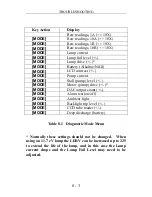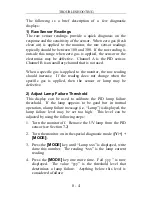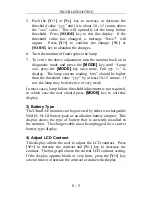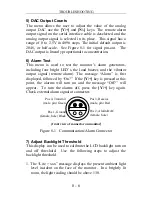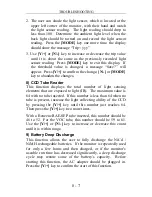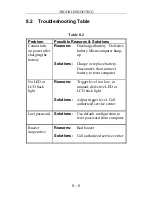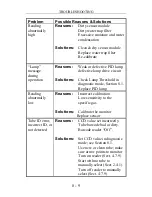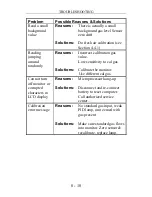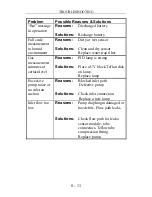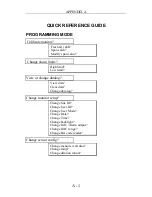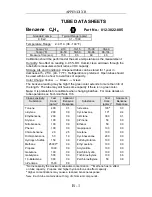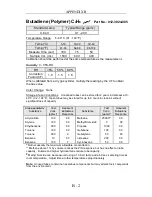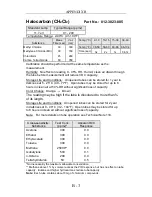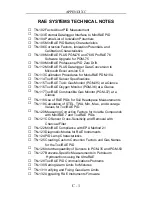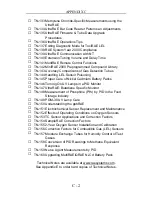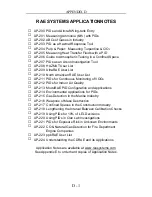
TROUBLESHOOTING
8 - 4
The following is a brief description of a few diagnostic
displays:
1) Raw Sensor Readings
The raw sensor readings provide a quick diagnosis on the
response and the sensitivity of the sensor. When zero gas (fresh
clean air) is applied to the monitor, the raw sensor readings
typically should be between 100 and 300. If the raw reading is
outside this range when zero gas is applied, the sensor or the
electronics may be defective. Channel A is the PID sensor.
Channel B is an auxillary channel that is not used.
When a specific gas is applied to the monitor, the raw reading
should increase. If the reading does not change when the
specific gas is applied, then the sensor or lamp may be
defective.
2) Adjust Lamp Failure Threshold
This display can be used to calibrate the PID lamp failure
threshold. If the lamp appears to be good but in normal
operation, a lamp failure message (i.e. “Lamp”) is displayed, the
lamp failure level may be set too high. This level can be
adjusted by using the following steps:
1.
Turn the monitor off. Remove the UV lamp from the PID
sensor (see Section 7.2)
2.
Turn the monitor on in the special diagnostic mode (
[Y/+] +
[MODE]
).
3.
Press the
[MODE]
key until “Lamp xxx” is displayed, write
done this number. The reading “xxx” is the lamp current
reading.
4.
Press the
[MODE]
key one more time. Fail yyy ” is now
displayed. The value “yyy” is the threshold level that
determines a lamp failure. Anything below this level is
considered a failure.














